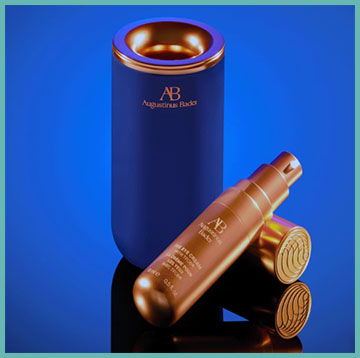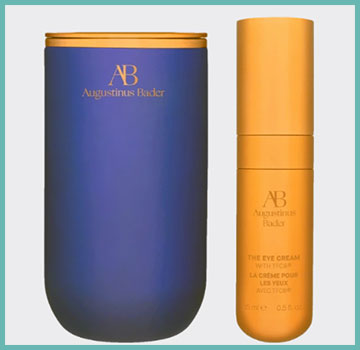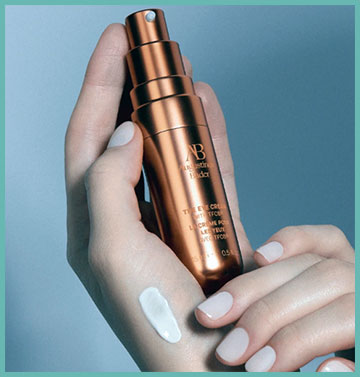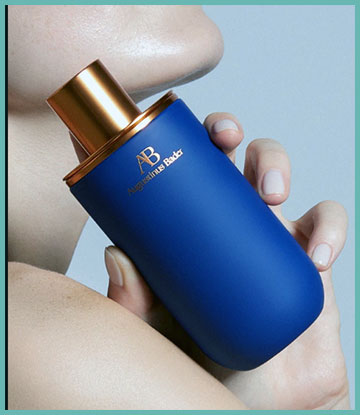I’ll be straight with you: Augustinus Bader’s Eye Cream sounds like a dream with its luxe packaging and celebrity endorsements, but I can’t recommend it.
After trying it myself and digging into user feedback, the sky-high price and underwhelming results make it a tough sell. In this article, I’ll share my experience, break down the pros and cons, compare it to other brands, and offer maintenance tips if you still decide to give it a go. Let’s get real about whether this cream is worth your hard-earned cash.
My Experience with Augustinus Bader Eye Cream

When I first got my hands on Augustinus Bader’s The Eye Cream, I was excited. The sleek blue tube, the weighty feel, the promise of their patented TFC8 technology—it all screamed luxury. I’d heard the hype from beauty editors and A-listers like Victoria Beckham, so I thought, “This could be the game-changer my under-eyes need.” As someone in my mid-30s with persistent dark circles and occasional puffiness, I was ready for a miracle.
I applied it twice daily, morning and night, as directed. The cream has a lightweight, almost silky texture that glides on smoothly. A little goes a long way, which is good because the 15ml tube retails for around $215. The first few days, I noticed a slight hydration boost. My under-eye area felt softer, and there was a subtle cooling effect that was refreshing. I thought, “Okay, maybe this is going somewhere.”
But after a month, the excitement faded. My dark circles? Still there, mocking me in the mirror. Puffiness? No significant change. Fine lines? Maybe a tiny softening, but nothing I couldn’t get from a drugstore cream. I kept waiting for the “life-changing” results promised by the brand, but they never came. The cream didn’t irritate my sensitive skin, which was a plus, but for over $200, I expected more than just “not bad.”
Then there was the packaging issue. The pump dispenser stopped working with about a quarter of the product left, and I had to pry it open to scrape out the rest. For a premium brand, that felt like a slap in the face. I also noticed the tube didn’t last as long as I’d hoped—about six weeks with conservative use. Compare that to other eye creams that last months, and it’s hard to justify the cost. My verdict? It’s a fancy moisturizer, but it didn’t deliver the transformative results I was sold on.
Pros of Augustinus Bader Eye Cream

Let’s give credit where it’s due. Augustinus Bader’s Eye Cream has some strengths, even if they don’t outweigh the drawbacks for me. Here’s what I liked, based on my experience and what others have said.
- Luxurious Texture and Hydration: The cream’s lightweight, non-greasy formula is a standout. It absorbs quickly, leaving your under-eyes feeling hydrated without that sticky residue some creams leave behind. If you’re after a product that feels high-end and provides decent moisture, this delivers. It’s especially nice for daytime use under makeup, as it sits well under concealer. Some users on Sephora noted it made their under-eye area look “plumper” and “smoother” after a few weeks, which aligns with my initial hydration boost.
- No Irritation for Sensitive Skin: If you’ve got sensitive skin like me, you’ll appreciate that this cream is fragrance-free and noncomedogenic. I didn’t experience redness, stinging, or breakouts, which is a big deal for an eye cream. The brand claims it’s formulated without irritants, and my skin agreed. Reviews on LovelySkin echoed this, with users praising its gentleness for reactive skin types.
- High-Quality Ingredients: The star ingredient, TFC8 (Trigger Factor Complex), is a blend of amino acids, vitamins, and peptides designed to support skin renewal. It’s based on Professor Bader’s stem cell research, which sounds impressive, even if the results didn’t blow me away. The cream also includes niacinamide, vitamin C, and hyaluronic acid—proven players for brightening and hydrating. While I didn’t see dramatic changes, these ingredients suggest it’s doing something good for your skin, at least in theory.
- Sustainable Packaging (Sort Of): The airless pump design is meant to reduce waste and preserve the formula without extra preservatives. It’s a nice touch for an eco-conscious brand. However, as I mentioned, the pump failed me, so the sustainability feels half-baked. Still, some users on Reddit appreciated the sleek, recyclable packaging, even if they didn’t love the cream itself.
These pros make the cream appealing on paper, but they’re overshadowed by the price and performance issues. If you’re curious, it’s not a bad product—it’s just not a great one for the cost.
Also read: My Thoughts on MEDIHEAL Retinol Collagen Lifting Pad.
Cons of Augustinus Bader Eye Cream

Now, let’s talk about why I’m not recommending this cream. The cons pile up fast, and they’re hard to ignore when you’re shelling out this much money.
- Exorbitant Price Tag: At $215 for 15ml (or $160 for The Rich Eye Cream), this is one of the priciest eye creams on the market. For context, you could buy multiple high-quality alternatives for that amount. User reviews on Amazon and MakeupAlley frequently call it “criminally expensive” and “not worth the money.” I agree—$200+ should guarantee visible results, not just a fancy feel. If you’re on a budget (or even if you’re not), the cost feels like a gut punch when the results don’t match.
- Underwhelming Results: The biggest letdown is the lack of transformative effects. The brand promises to reduce puffiness, dark circles, and fine lines, but after a month, I saw minimal improvement. My dark circles were as stubborn as ever, and puffiness only decreased slightly on good days. Reviews on Reddit and e-commerce sites like Amazon echo this, with users calling it “snake oil” and saying it “doesn’t do what it claims.” For a product with such bold claims, the results feel like a whisper, not a shout.
- Short Product Lifespan: The 15ml tube lasts about 6-8 weeks with twice-daily use, which is abysmal for the price. Compare that to something like CeraVe’s Eye Repair Cream (14ml, ~$15), which lasts me three months. Many users on LovelySkin and Amazon complained about the small quantity and fast depletion, especially since the pump design makes it hard to use every drop. It’s frustrating to spend so much and run out so quickly.
- Packaging Woes: That pump I mentioned? It’s a dealbreaker. When it stopped dispensing with product still inside, I had to break the tube open, which felt ridiculous for a luxury brand. Other users on Amazon reported similar issues, with one saying, “You never see how much cream you’re actually getting.” The “sustainable” packaging loses points when it’s impractical and wasteful in practice.
- Hype Over Substance: The brand leans heavily on celebrity endorsements and buzz, but the product doesn’t always live up to the hype. Reviews on MakeupAlley and Reddit point out that the marketing (and product placement in shows like Succession) oversells the cream’s abilities. I fell for the hype, too, but after using it, I realized it’s more about the idea of luxury than actual results. If you’re swayed by A-lister praise, you might be disappointed when your skin doesn’t look like Kim Kardashian’s.
These cons make it hard to justify buying this cream, especially when cheaper alternatives perform just as well—or better.
Comparison with Other Eye Creams

To put Augustinus Bader’s Eye Cream in context, let’s stack it up against three popular competitors: CeraVe Eye Repair Cream, Kiehl’s Creamy Eye Treatment with Avocado, and La Mer The Eye Concentrate. I’ve tried all of these, so I can give you a real-user perspective.
- CeraVe Eye Repair Cream (~$15, 14ml): CeraVe is a drugstore hero, and its eye cream is a fraction of Augustinus Bader’s price. Packed with ceramides, hyaluronic acid, and niacinamide, it hydrates and strengthens the skin barrier. I found it just as moisturizing as Augustinus Bader, with a thicker texture that’s great for nighttime. It reduced my puffiness slightly better than Bader’s cream, though dark circles remained stubborn. The tube lasts months, and the simple packaging never fails. For everyday hydration, CeraVe’s a no-brainer over Bader’s overpriced option.
- Kiehl’s Creamy Eye Treatment with Avocado (~$60, 14ml): Kiehl’s eye cream is a mid-range contender with a rich, creamy formula featuring avocado oil and shea butter. It’s heavier than Augustinus Bader, making it ideal for dry skin or winter months. I noticed a similar hydration boost to Bader’s cream, but Kiehl’s felt more nourishing long-term. It didn’t do much for my dark circles or fine lines, but neither did Bader. At a quarter of the price, Kiehl’s offers comparable performance with a longer lifespan and no fussy packaging issues.
- La Mer The Eye Concentrate (~$250, 15ml): La Mer is Augustinus Bader’s closest rival in the luxury space. Its Eye Concentrate uses a seaweed-based “Miracle Broth” to hydrate and brighten. I found it slightly more effective for fine lines than Bader’s cream, with a richer texture that feels indulgent. However, like Bader, it didn’t banish my dark circles, and the price is equally jaw-dropping. La Mer’s jar packaging is more user-friendly than Bader’s pump, but you’re still paying for prestige over results. If you’re set on splurging, La Mer edges out slightly, but neither is worth it.
- The Verdict: Augustinus Bader doesn’t stand out in this lineup. CeraVe and Kiehl’s offer similar (or better) hydration at a fraction of the cost, while La Mer matches its luxury vibe but performs marginally better. If you’re looking for value and results, skip Bader and go for a more affordable option.
Tips for Using Augustinus Bader Eye Cream

If you’ve already bought Augustinus Bader’s Eye Cream or are determined to try it, here’s how to get the most out of it. These tips will help maximize its benefits and stretch that pricey tube as far as possible.
- Apply Sparingly and Correctly: A pea-sized amount is enough for both eyes. Use your ring finger to gently pat (not rub) the cream along the orbital bone, avoiding direct contact with your eyelids or lash line to prevent irritation. Apply it after cleansing and any serums but before heavier moisturizers. I found morning and evening use worked best, but if you’re stretching it, once daily (at night) still provides decent hydration.
- Store It Properly: Keep the tube in a cool, dry place away from direct sunlight to preserve the formula’s potency. The airless pump is supposed to extend shelf life, but I noticed the cream started feeling less “fresh” after a month. To avoid waste, use it consistently once opened, and don’t let it sit unused for weeks.
- Pair with a Good Skincare Routine: The cream isn’t a miracle worker, so support it with a solid routine. Cleanse gently, use a hydrating toner, and apply a sunscreen during the day to protect the delicate eye area. I paired it with a vitamin C serum, which seemed to enhance the brightening effect slightly. If you’re using retinol, apply it on alternate nights to avoid irritation, as Bader’s cream isn’t strong enough to buffer actives.
- Work Around the Pump: If the pump stops dispensing, don’t toss the tube. Carefully pry it open with a clean tool (like a sanitized butter knife) to access the remaining cream. Transfer it to a small, clean container to keep it hygienic. This trick saved me about a week’s worth of product, which is significant at this price point.
- Lifestyle Matters: No eye cream can fix lifestyle factors like poor sleep or dehydration. Drink plenty of water, aim for 7-8 hours of sleep, and eat a balanced diet with omega-3s and antioxidants to support skin health. I noticed my under-eyes looked better when I prioritized sleep, regardless of the cream. If puffiness is your issue, try sleeping with an extra pillow to reduce fluid buildup.
These tips can help you squeeze every drop of value from the cream, but honestly, you’ll need to manage expectations. It’s a decent hydrator, but don’t expect it to transform your eye area.
Read More: My Thoughts on Pacifica’s Rosemary Apple Cider Scalp Detox.
Frequently Asked Questions (FAQ)
There’s no universal “best” eye cream—it depends on your needs and budget. For hydration and affordability, I love CeraVe’s Eye Repair Cream ($15), which rivals pricier options. If you want luxury with slightly better results, La Mer’s The Eye Concentrate ($250) edges out Augustinus Bader. For puffiness, Kiehl’s Creamy Eye Treatment with Avocado (~$60) is a solid mid-range pick. Test a few to find what works for your skin, and don’t fall for hype alone.
Augustinus Bader’s Eye Cream provides decent hydration and a slight softening of fine lines, with a lightweight, non-irritating formula. However, it doesn’t significantly reduce dark circles or puffiness, despite the brand’s claims. After a month, my under-eyes felt softer but looked largely the same. User reviews on Amazon and Reddit report similar experiences, with many saying it’s overpriced for the minimal results.
Some dermatologists praise Augustinus Bader for its TFC8 technology and high-quality ingredients like niacinamide and hyaluronic acid. However, there’s no consensus that it’s superior to other eye creams. Many derms recommend more affordable options like CeraVe or Neutrogena for similar benefits. The brand’s science is impressive, but results vary, and the price often overshadows the payoff.
For most people, Augustinus Bader products, including the Eye Cream, aren’t worth the steep price. While the ingredients and packaging are premium, the results don’t justify $200+. You can get comparable hydration and anti-aging benefits from brands like CeraVe, Kiehl’s, or even La Mer for less (or slightly more, with better outcomes). If you’re curious, try a sample first, but don’t expect miracles.
Final Thoughts
After using Augustinus Bader’s Eye Cream and weighing its pros and cons, I can’t recommend it. The luxurious texture and gentle formula are nice, but the exorbitant price, lackluster results, and frustrating packaging make it a pass. Compared to affordable heroes like CeraVe or mid-range options like Kiehl’s, it doesn’t deliver enough to justify the splurge. If you’re tempted, use my maintenance tips to maximize it, but honestly, your money is better spent elsewhere. Save your cash for a cream that truly transforms your under-eyes—because this one doesn’t.
